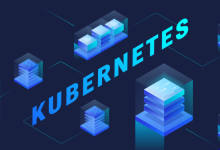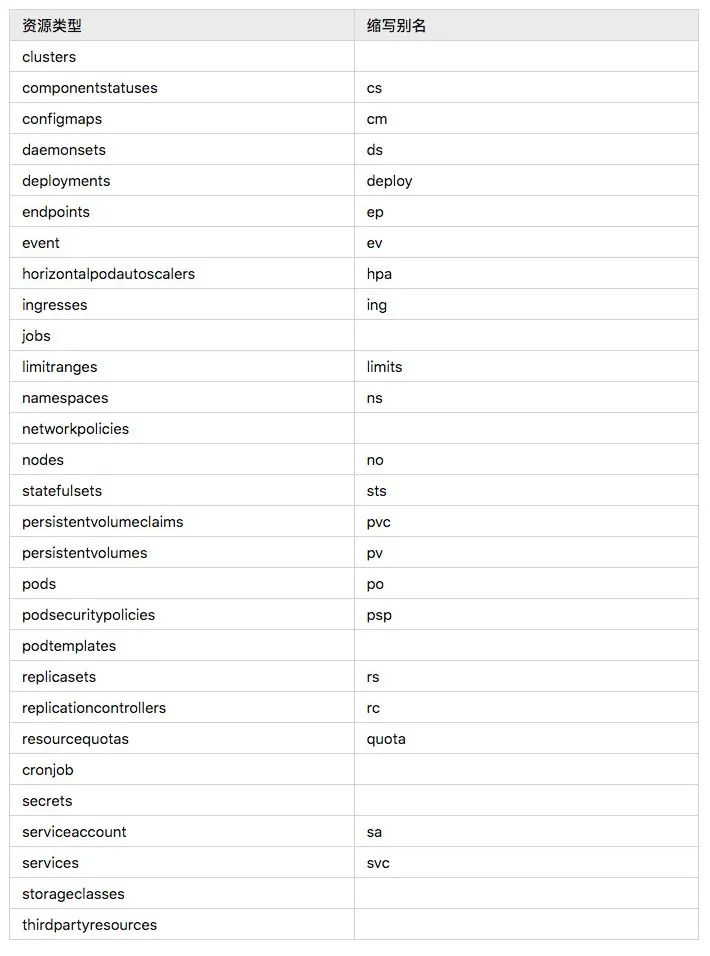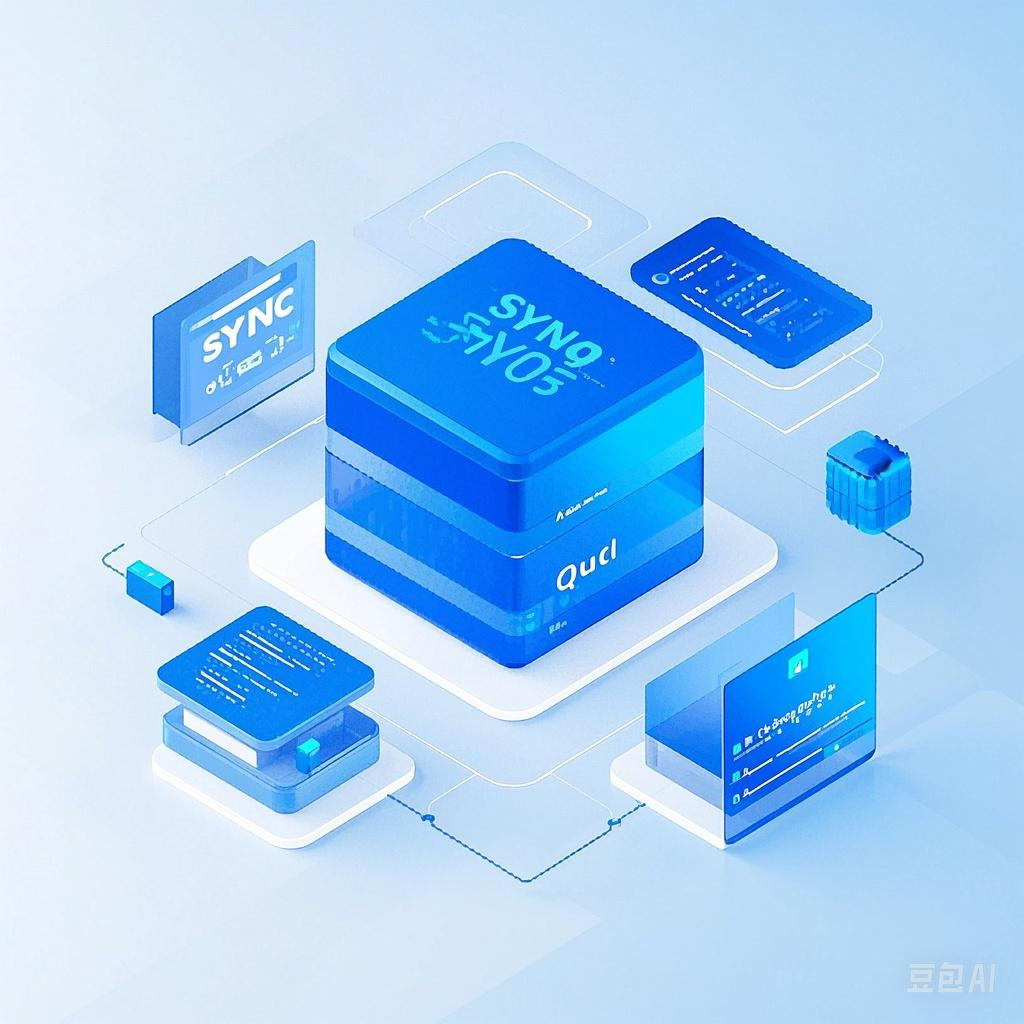kube-scheduler 是 kubernetes 的核心组件之一,主要负责整个集群资源的调度功能,根据特定的调度算法和策略,将 Pod 调度到最优的工作节点上面去,从而更加合理、更加充分的利用集群的资源,这也是我们选择使用 kubernetes 一个非常重要的理由。如果一门新的技术不能帮助企业节约成本、提供效率,我相信是很难推进的。
调度流程
默认情况下,kube-scheduler 提供的默认调度器能够满足我们绝大多数的要求,我们前面和大家接触的示例也基本上用的默认的策略,都可以保证我们的 Pod 可以被分配到资源充足的节点上运行。但是在实际的线上项目中,可能我们自己会比 kubernetes 更加了解我们自己的应用,比如我们希望一个 Pod 只能运行在特定的几个节点上,或者这几个节点只能用来运行特定类型的应用,这就需要我们的调度器能够可控。
kube-scheduler 的主要作用就是根据特定的调度算法和调度策略将 Pod 调度到合适的 Node 节点上去,是一个独立的二进制程序,启动之后会一直监听 API Server,获取到 PodSpec.NodeName 为空的 Pod,对每个 Pod 都会创建一个 binding。
这个过程在我们看来好像比较简单,但在实际的生产环境中,需要考虑的问题就有很多了:
- 如何保证全部的节点调度的公平性?要知道并不是所有节点资源配置一定都是一样的
- 如何保证每个节点都能被分配资源?
- 集群资源如何能够被高效利用?
- 集群资源如何才能被最大化使用?
- 如何保证 Pod 调度的性能和效率?
- 用户是否可以根据自己的实际需求定制自己的调度策略?
考虑到实际环境中的各种复杂情况,kubernetes 的调度器采用插件化的形式实现,可以方便用户进行定制或者二次开发,我们可以自定义一个调度器并以插件形式和 kubernetes 进行集成。
kubernetes 调度器的源码位于 kubernetes/pkg/scheduler 中,其中 Scheduler 创建和运行的核心程序,对应的代码在 pkg/scheduler/scheduler.go,如果要查看 kube-scheduler 的入口程序,对应的代码在 cmd/kube-scheduler/scheduler.go。
调度主要分为以下几个部分:
- 首先是预选过程,过滤掉不满足条件的节点,这个过程称为
Predicates(过滤) - 然后是优选过程,对通过的节点按照优先级排序,称之为
Priorities(打分) - 最后从中选择优先级最高的节点,如果中间任何一步骤有错误,就直接返回错误
Predicates 阶段首先遍历全部节点,过滤掉不满足条件的节点,属于强制性规则,这一阶段输出的所有满足要求的节点将被记录并作为第二阶段的输入,如果所有的节点都不满足条件,那么 Pod 将会一直处于 Pending 状态,直到有节点满足条件,在这期间调度器会不断的重试。
所以我们在部署应用的时候,如果发现有 Pod 一直处于 Pending 状态,那么就是没有满足调度条件的节点,这个时候可以去检查下节点资源是否可用。
Priorities 阶段即再次对节点进行筛选,如果有多个节点都满足条件的话,那么系统会按照节点的优先级(priorites)大小对节点进行排序,最后选择优先级最高的节点来部署 Pod 应用。
下面是调度过程的简单示意图:
目前调度器已经全部通过插件的方式实现了调度框架,默认开启的内置调度插件如以下代码所示:
// pkg/scheduler/framework/plugins/registry.go
// NewInTreeRegistry 使用所有内部插件构建注册表。
// 外部插件可以通过 WithFrameworkOutOfTreeRegistry 选项注册额外的插件。
func NewInTreeRegistry() runtime.Registry {
fts := plfeature.Features{
EnableDynamicResourceAllocation: feature.DefaultFeatureGate.Enabled(features.DynamicResourceAllocation),
EnableReadWriteOncePod: feature.DefaultFeatureGate.Enabled(features.ReadWriteOncePod),
EnableVolumeCapacityPriority: feature.DefaultFeatureGate.Enabled(features.VolumeCapacityPriority),
EnableMinDomainsInPodTopologySpread: feature.DefaultFeatureGate.Enabled(features.MinDomainsInPodTopologySpread),
EnableNodeInclusionPolicyInPodTopologySpread: feature.DefaultFeatureGate.Enabled(features.NodeInclusionPolicyInPodTopologySpread),
EnableMatchLabelKeysInPodTopologySpread: feature.DefaultFeatureGate.Enabled(features.MatchLabelKeysInPodTopologySpread),
EnablePodSchedulingReadiness: feature.DefaultFeatureGate.Enabled(features.PodSchedulingReadiness),
}
registry := runtime.Registry{
dynamicresources.Name: runtime.FactoryAdapter(fts, dynamicresources.New),
selectorspread.Name: selectorspread.New,
imagelocality.Name: imagelocality.New,
tainttoleration.Name: tainttoleration.New,
nodename.Name: nodename.New,
nodeports.Name: nodeports.New,
nodeaffinity.Name: nodeaffinity.New,
podtopologyspread.Name: runtime.FactoryAdapter(fts, podtopologyspread.New),
nodeunschedulable.Name: nodeunschedulable.New,
noderesources.Name: runtime.FactoryAdapter(fts, noderesources.NewFit),
noderesources.BalancedAllocationName: runtime.FactoryAdapter(fts, noderesources.NewBalancedAllocation),
volumebinding.Name: runtime.FactoryAdapter(fts, volumebinding.New),
volumerestrictions.Name: runtime.FactoryAdapter(fts, volumerestrictions.New),
volumezone.Name: volumezone.New,
nodevolumelimits.CSIName: runtime.FactoryAdapter(fts, nodevolumelimits.NewCSI),
nodevolumelimits.EBSName: runtime.FactoryAdapter(fts, nodevolumelimits.NewEBS),
nodevolumelimits.GCEPDName: runtime.FactoryAdapter(fts, nodevolumelimits.NewGCEPD),
nodevolumelimits.AzureDiskName: runtime.FactoryAdapter(fts, nodevolumelimits.NewAzureDisk),
nodevolumelimits.CinderName: runtime.FactoryAdapter(fts, nodevolumelimits.NewCinder),
interpodaffinity.Name: interpodaffinity.New,
queuesort.Name: queuesort.New,
defaultbinder.Name: defaultbinder.New,
defaultpreemption.Name: runtime.FactoryAdapter(fts, defaultpreemption.New),
schedulinggates.Name: runtime.FactoryAdapter(fts, schedulinggates.New),
}
return registry
}从上面我们可以看出调度器的一系列算法由各种插件在调度的不同阶段来完成,下面我们就先来了解下调度框架。
调度框架
调度框架定义了一组扩展点,用户可以实现扩展点定义的接口来定义自己的调度逻辑(我们称之为扩展),并将扩展注册到扩展点上,调度框架在执行调度工作流时,遇到对应的扩展点时,将调用用户注册的扩展。调度框架在预留扩展点时,都是有特定的目的,有些扩展点上的扩展可以改变调度程序的决策方法,有些扩展点上的扩展只是发送一个通知。
我们知道每当调度一个 Pod 时,都会按照两个过程来执行:调度过程和绑定过程。
调度过程为 Pod 选择一个合适的节点,绑定过程则将调度过程的决策应用到集群中(也就是在被选定的节点上运行 Pod),将调度过程和绑定过程合在一起,称之为调度上下文(scheduling context)。需要注意的是调度过程是同步运行的(同一时间点只为一个 Pod 进行调度),绑定过程可异步运行(同一时间点可并发为多个 Pod 执行绑定)。
调度过程和绑定过程遇到如下情况时会中途退出:
- 调度程序认为当前没有该 Pod 的可选节点
- 内部错误
这个时候,该 Pod 将被放回到 待调度队列,并等待下次重试。
扩展点(Extension Points)
下图展示了调度框架中的调度上下文及其中的扩展点,一个扩展可以注册多个扩展点,以便可以执行更复杂的有状态的任务。
如果我们要实现自己的插件,必须向调度框架注册插件并完成配置,另外还必须实现扩展点接口,对应的扩展点接口我们可以在源码 pkg/scheduler/framework/interface.go 文件中找到,如下所示:
// Plugin is the parent type for all the scheduling framework plugins.
type Plugin interface {
Name() string
}
// PreEnqueuePlugin is an interface that must be implemented by "PreEnqueue" plugins.
// These plugins are called prior to adding Pods to activeQ.
// Note: an preEnqueue plugin is expected to be lightweight and efficient, so it's not expected to
// involve expensive calls like accessing external endpoints; otherwise it'd block other
// Pods' enqueuing in event handlers.
type PreEnqueuePlugin interface {
Plugin
// PreEnqueue is called prior to adding Pods to activeQ.
PreEnqueue(ctx context.Context, p *v1.Pod) *Status
}
// LessFunc is the function to sort pod info
type LessFunc func(podInfo1, podInfo2 *QueuedPodInfo) bool
// QueueSortPlugin is an interface that must be implemented by "QueueSort" plugins.
// These plugins are used to sort pods in the scheduling queue. Only one queue sort
// plugin may be enabled at a time.
type QueueSortPlugin interface {
Plugin
// Less are used to sort pods in the scheduling queue.
Less(*QueuedPodInfo, *QueuedPodInfo) bool
}
// EnqueueExtensions is an optional interface that plugins can implement to efficiently
// move unschedulable Pods in internal scheduling queues. Plugins
// that fail pod scheduling (e.g., Filter plugins) are expected to implement this interface.
type EnqueueExtensions interface {
// EventsToRegister returns a series of possible events that may cause a Pod
// failed by this plugin schedulable.
// The events will be registered when instantiating the internal scheduling queue,
// and leveraged to build event handlers dynamically.
// Note: the returned list needs to be static (not depend on configuration parameters);
// otherwise it would lead to undefined behavior.
EventsToRegister() []ClusterEvent
}
// PreFilterExtensions is an interface that is included in plugins that allow specifying
// callbacks to make incremental updates to its supposedly pre-calculated
// state.
type PreFilterExtensions interface {
// AddPod is called by the framework while trying to evaluate the impact
// of adding podToAdd to the node while scheduling podToSchedule.
AddPod(ctx context.Context, state *CycleState, podToSchedule *v1.Pod, podInfoToAdd *PodInfo, nodeInfo *NodeInfo) *Status
// RemovePod is called by the framework while trying to evaluate the impact
// of removing podToRemove from the node while scheduling podToSchedule.
RemovePod(ctx context.Context, state *CycleState, podToSchedule *v1.Pod, podInfoToRemove *PodInfo, nodeInfo *NodeInfo) *Status
}
// PreFilterPlugin is an interface that must be implemented by "PreFilter" plugins.
// These plugins are called at the beginning of the scheduling cycle.
type PreFilterPlugin interface {
Plugin
// PreFilter is called at the beginning of the scheduling cycle. All PreFilter
// plugins must return success or the pod will be rejected. PreFilter could optionally
// return a PreFilterResult to influence which nodes to evaluate downstream. This is useful
// for cases where it is possible to determine the subset of nodes to process in O(1) time.
PreFilter(ctx context.Context, state *CycleState, p *v1.Pod) (*PreFilterResult, *Status)
// PreFilterExtensions returns a PreFilterExtensions interface if the plugin implements one,
// or nil if it does not. A Pre-filter plugin can provide extensions to incrementally
// modify its pre-processed info. The framework guarantees that the extensions
// AddPod/RemovePod will only be called after PreFilter, possibly on a cloned
// CycleState, and may call those functions more than once before calling
// Filter again on a specific node.
PreFilterExtensions() PreFilterExtensions
}
// FilterPlugin is an interface for Filter plugins. These plugins are called at the
// filter extension point for filtering out hosts that cannot run a pod.
// This concept used to be called 'predicate' in the original scheduler.
// These plugins should return "Success", "Unschedulable" or "Error" in Status.code.
// However, the scheduler accepts other valid codes as well.
// Anything other than "Success" will lead to exclusion of the given host from
// running the pod.
type FilterPlugin interface {
Plugin
// Filter is called by the scheduling framework.
// All FilterPlugins should return "Success" to declare that
// the given node fits the pod. If Filter doesn't return "Success",
// it will return "Unschedulable", "UnschedulableAndUnresolvable" or "Error".
// For the node being evaluated, Filter plugins should look at the passed
// nodeInfo reference for this particular node's information (e.g., pods
// considered to be running on the node) instead of looking it up in the
// NodeInfoSnapshot because we don't guarantee that they will be the same.
// For example, during preemption, we may pass a copy of the original
// nodeInfo object that has some pods removed from it to evaluate the
// possibility of preempting them to schedule the target pod.
Filter(ctx context.Context, state *CycleState, pod *v1.Pod, nodeInfo *NodeInfo) *Status
}
// PostFilterPlugin is an interface for "PostFilter" plugins. These plugins are called
// after a pod cannot be scheduled.
type PostFilterPlugin interface {
Plugin
// PostFilter is called by the scheduling framework.
// A PostFilter plugin should return one of the following statuses:
// - Unschedulable: the plugin gets executed successfully but the pod cannot be made schedulable.
// - Success: the plugin gets executed successfully and the pod can be made schedulable.
// - Error: the plugin aborts due to some internal error.
//
// Informational plugins should be configured ahead of other ones, and always return Unschedulable status.
// Optionally, a non-nil PostFilterResult may be returned along with a Success status. For example,
// a preemption plugin may choose to return nominatedNodeName, so that framework can reuse that to update the
// preemptor pod's .spec.status.nominatedNodeName field.
PostFilter(ctx context.Context, state *CycleState, pod *v1.Pod, filteredNodeStatusMap NodeToStatusMap) (*PostFilterResult, *Status)
}
// PreScorePlugin is an interface for "PreScore" plugin. PreScore is an
// informational extension point. Plugins will be called with a list of nodes
// that passed the filtering phase. A plugin may use this data to update internal
// state or to generate logs/metrics.
type PreScorePlugin interface {
Plugin
// PreScore is called by the scheduling framework after a list of nodes
// passed the filtering phase. All prescore plugins must return success or
// the pod will be rejected
PreScore(ctx context.Context, state *CycleState, pod *v1.Pod, nodes []*v1.Node) *Status
}
// ScoreExtensions is an interface for Score extended functionality.
type ScoreExtensions interface {
// NormalizeScore is called for all node scores produced by the same plugin's "Score"
// method. A successful run of NormalizeScore will update the scores list and return
// a success status.
NormalizeScore(ctx context.Context, state *CycleState, p *v1.Pod, scores NodeScoreList) *Status
}
// ScorePlugin is an interface that must be implemented by "Score" plugins to rank
// nodes that passed the filtering phase.
type ScorePlugin interface {
Plugin
// Score is called on each filtered node. It must return success and an integer
// indicating the rank of the node. All scoring plugins must return success or
// the pod will be rejected.
Score(ctx context.Context, state *CycleState, p *v1.Pod, nodeName string) (int64, *Status)
// ScoreExtensions returns a ScoreExtensions interface if it implements one, or nil if does not.
ScoreExtensions() ScoreExtensions
}
// ReservePlugin is an interface for plugins with Reserve and Unreserve
// methods. These are meant to update the state of the plugin. This concept
// used to be called 'assume' in the original scheduler. These plugins should
// return only Success or Error in Status.code. However, the scheduler accepts
// other valid codes as well. Anything other than Success will lead to
// rejection of the pod.
type ReservePlugin interface {
Plugin
// Reserve is called by the scheduling framework when the scheduler cache is
// updated. If this method returns a failed Status, the scheduler will call
// the Unreserve method for all enabled ReservePlugins.
Reserve(ctx context.Context, state *CycleState, p *v1.Pod, nodeName string) *Status
// Unreserve is called by the scheduling framework when a reserved pod was
// rejected, an error occurred during reservation of subsequent plugins, or
// in a later phase. The Unreserve method implementation must be idempotent
// and may be called by the scheduler even if the corresponding Reserve
// method for the same plugin was not called.
Unreserve(ctx context.Context, state *CycleState, p *v1.Pod, nodeName string)
}
// PreBindPlugin is an interface that must be implemented by "PreBind" plugins.
// These plugins are called before a pod being scheduled.
type PreBindPlugin interface {
Plugin
// PreBind is called before binding a pod. All prebind plugins must return
// success or the pod will be rejected and won't be sent for binding.
PreBind(ctx context.Context, state *CycleState, p *v1.Pod, nodeName string) *Status
}
// PostBindPlugin is an interface that must be implemented by "PostBind" plugins.
// These plugins are called after a pod is successfully bound to a node.
type PostBindPlugin interface {
Plugin
// PostBind is called after a pod is successfully bound. These plugins are
// informational. A common application of this extension point is for cleaning
// up. If a plugin needs to clean-up its state after a pod is scheduled and
// bound, PostBind is the extension point that it should register.
PostBind(ctx context.Context, state *CycleState, p *v1.Pod, nodeName string)
}
// PermitPlugin is an interface that must be implemented by "Permit" plugins.
// These plugins are called before a pod is bound to a node.
type PermitPlugin interface {
Plugin
// Permit is called before binding a pod (and before prebind plugins). Permit
// plugins are used to prevent or delay the binding of a Pod. A permit plugin
// must return success or wait with timeout duration, or the pod will be rejected.
// The pod will also be rejected if the wait timeout or the pod is rejected while
// waiting. Note that if the plugin returns "wait", the framework will wait only
// after running the remaining plugins given that no other plugin rejects the pod.
Permit(ctx context.Context, state *CycleState, p *v1.Pod, nodeName string) (*Status, time.Duration)
}
// BindPlugin is an interface that must be implemented by "Bind" plugins. Bind
// plugins are used to bind a pod to a Node.
type BindPlugin interface {
Plugin
// Bind plugins will not be called until all pre-bind plugins have completed. Each
// bind plugin is called in the configured order. A bind plugin may choose whether
// or not to handle the given Pod. If a bind plugin chooses to handle a Pod, the
// remaining bind plugins are skipped. When a bind plugin does not handle a pod,
// it must return Skip in its Status code. If a bind plugin returns an Error, the
// pod is rejected and will not be bound.
Bind(ctx context.Context, state *CycleState, p *v1.Pod, nodeName string) *Status
}对于调度框架插件的启用或者禁用,我们可以使用安装集群时的 KubeSchedulerConfiguration 资源对象来进行配置。下面的例子中的配置启用了一个实现了 reserve 和 preBind 扩展点的插件,并且禁用了另外一个插件,同时为插件 foo 提供了一些配置信息:
apiVersion: kubescheduler.config.k8s.io/v1
kind: KubeSchedulerConfiguration
---
plugins:
reserve:
enabled:
- name: foo
- name: bar
disabled:
- name: baz
preBind:
enabled:
- name: foo
disabled:
- name: baz
pluginConfig:
- name: foo
args: >
foo插件可以解析的任意内容扩展的调用顺序如下:
- 如果某个扩展点没有配置对应的扩展,调度框架将使用默认插件中的扩展
- 如果为某个扩展点配置且激活了扩展,则调度框架将先调用默认插件的扩展,再调用配置中的扩展
- 默认插件的扩展始终被最先调用,然后按照
KubeSchedulerConfiguration中扩展的激活enabled顺序逐个调用扩展点的扩展 - 可以先禁用默认插件的扩展,然后在
enabled列表中的某个位置激活默认插件的扩展,这种做法可以改变默认插件的扩展被调用时的顺序
假设默认插件 foo 实现了 reserve 扩展点,此时我们要添加一个插件 bar,想要在 foo 之前被调用,则应该先禁用 foo 再按照 bar foo 的顺序激活。示例配置如下所示:
apiVersion: kubescheduler.config.k8s.io/v1
kind: KubeSchedulerConfiguration
---
profiles:
- plugins:
reserve:
enabled:
- name: bar
- name: foo
disabled:
- name: foo在源码目录 pkg/scheduler/framework/plugins/examples 中有几个示范插件,我们可以参照其实现方式。
示例
其实要实现一个调度框架的插件,并不难,我们只要实现对应的扩展点,然后将插件注册到调度器中即可,下面是默认调度器在初始化的时候注册的插件:
// pkg/scheduler/algorithmprovider/registry.go
func NewRegistry() Registry {
return Registry{
// FactoryMap:
// New plugins are registered here.
// example:
// {
// stateful_plugin.Name: stateful.NewStatefulMultipointExample,
// fooplugin.Name: fooplugin.New,
// }
}
}但是可以看到默认并没有注册一些插件,所以要想让调度器能够识别我们的插件代码,就需要自己来实现一个调度器了,当然这个调度器我们完全没必要完全自己实现,直接调用默认的调度器,然后在上面的 NewRegistry() 函数中将我们的插件注册进去即可。在 kube-scheduler 的源码文件 kubernetes/cmd/kube-scheduler/app/server.go 中有一个 NewSchedulerCommand 入口函数,其中的参数是一个类型为 Option 的列表,而这个 Option 恰好就是一个插件配置的定义:
// Option configures a framework.Registry.
type Option func(framework.Registry) error
// NewSchedulerCommand creates a *cobra.Command object with default parameters and registryOptions
func NewSchedulerCommand(registryOptions ...Option) *cobra.Command {
......
}所以我们完全就可以直接调用这个函数来作为我们的函数入口,并且传入我们自己实现的插件作为参数即可,而且该文件下面还有一个名为 WithPlugin 的函数可以来创建一个 Option 实例:
func WithPlugin(name string, factory runtime.PluginFactory) Option {
return func(registry runtime.Registry) error {
return registry.Register(name, factory)
}
}所以最终我们的入口函数如下所示:
package main
import (
"k8s.io/component-base/cli"
"k8s.io/kubernetes/cmd/kube-scheduler/app"
"math/rand"
"os"
// Ensure scheme package is initialized.
_ "simple-scheduler/pkg/scheduler/apis/config/schema"
"simple-scheduler/pkg/scheduler/framework/plugins"
"time"
)
func main() {
rand.Seed(time.Now().UTC().UnixNano())
command := app.NewSchedulerCommand(
app.WithPlugin(plugins.Name, plugins.New))
code := cli.Run(command)
os.Exit(code)
}其中 app.WithPlugin(sample.Name, sample.New) 就是我们接下来要实现的插件,从 WithPlugin 函数的参数也可以看出我们这里的 sample.New 必须是一个 framework.PluginFactory 类型的值,而 PluginFactory 的定义就是一个函数:
type PluginFactory = func(configuration runtime.Object, f framework.Handle) (framework.Plugin, error)所以 sample.New 实际上就是上面的这个函数,在这个函数中我们可以获取到插件中的一些数据然后进行逻辑处理即可,插件实现如下所示,我们这里只是简单获取下数据打印日志,如果你有实际需求的可以根据获取的数据就行处理即可,我们这里只是实现了 PreFilter、Filter、PreBind 三个扩展点,其他的可以用同样的方式来扩展即可:
package plugins
import (
"context"
"fmt"
v1 "k8s.io/api/core/v1"
"k8s.io/apimachinery/pkg/runtime"
"k8s.io/klog/v2"
"k8s.io/kubernetes/pkg/scheduler/framework"
"simple-scheduler/pkg/scheduler/apis/config"
"simple-scheduler/pkg/scheduler/apis/config/validation"
)
const Name = "sample-plugin"
type Sample struct {
args *config.SampleArgs
handle framework.Handle
}
func (s *Sample) Name() string {
return Name
}
func (s *Sample) PreFilter(ctx context.Context, cycleState *framework.CycleState, pod *v1.Pod) (*framework.PreFilterResult, *framework.Status) {
klog.V(3).Infof("prefilter pod: %v, args: %+v", pod.Name, s.args)
return nil, nil
}
func (s *Sample) Filter(ctx context.Context, cycleState *framework.CycleState, pod *v1.Pod, nodeInfo *framework.NodeInfo) *framework.Status {
klog.V(3).Infof("filter pod: %v, node: %v", pod.Name, nodeInfo.Node().Name)
return framework.NewStatus(framework.Success, "")
}
func (s *Sample) PreBind(ctx context.Context, state *framework.CycleState, pod *v1.Pod, nodeName string) *framework.Status {
if nodeInfo, err := s.handle.SnapshotSharedLister().NodeInfos().Get(nodeName); err != nil {
return framework.NewStatus(framework.Error, fmt.Sprintf("prebind get node: %s info error: %s", nodeName, err.Error()))
} else {
klog.V(3).Infof("prebind node info: %+v", nodeInfo.Node())
return framework.NewStatus(framework.Success, "")
}
}
func New(fpArgs runtime.Object, fh framework.Handle) (framework.Plugin, error) {
args, ok := fpArgs.(*config.SampleArgs)
if !ok {
return nil, fmt.Errorf("got args of type %T, want *SampleArgs", fpArgs)
}
if err := validation.ValidateSamplePluginArgs(*args); err != nil {
return nil, err
}
return &Sample{
args: args,
handle: fh,
}, nil
}有关完整代码详见:
这里还定义了一个调度去插件的参数:
// +k8s:deepcopy-gen:interfaces=k8s.io/apimachinery/pkg/runtime.Object
// SampleArgs holds arguments to configure the Sample-Plugin plugin.
type SampleArgs struct {
metav1.TypeMeta json:",inline"
FavoriteColor *string json:"favoriteColor,omitempty"
FavoriteNumber *int json:"favoriteNumber,omitempty"
ThanksTo *string json:"thanksTo,omitempty"
}在旧版本中提供了 framework.DecodeInto 函数可以直接将我们传递进来的参数进行转换,但是新版本必须是一个 runtime.Object 对象,所以必须实现对应的深拷贝方法,所以我们在结构体上面增加了
+k8s:deepcopy-gen:interfaces=k8s.io/apimachinery/pkg/runtime.Object这个注解,然后通过 Kubernetes 源码中提供的 hack/update-gen.sh 脚本就可以自动生成对对应的深拷贝方法。
同意在文件 register.go 中,我们需要在对 AddKnownTypes 函数的调用中添加 SampleArgs。另外,请注意在 main.go 文件中我们导入了这里定义的 schema,它使用我们在 pkg/apis 中引入的所有配置初始化方案/配置文件。
实现完成后,编译打包成镜像即可,然后我们就可以当成普通的应用用一个 Deployment 控制器来部署即可,由于我们需要去获取集群中的一些资源对象,所以当然需要申请 RBAC 权限,然后同样通过 --config 参数来配置我们的调度器,同样还是使用一个 KubeSchedulerConfiguration 资源对象配置,可以通过 plugins 来启用或者禁用我们实现的插件,也可以通过 pluginConfig 来传递一些参数值给插件:
# sample-scheduler.yaml
kind: ClusterRole
apiVersion: rbac.authorization.k8s.io/v1
metadata:
name: sample-scheduler-clusterrole
rules:
- apiGroups:
- ""
resources:
- endpoints
- events
verbs:
- create
- get
- update
- apiGroups:
- ""
resources:
- nodes
- namespaces
verbs:
- get
- list
- watch
- apiGroups:
- ""
resources:
- pods
verbs:
- delete
- get
- list
- watch
- update
- apiGroups:
- ""
resources:
- bindings
- pods/binding
verbs:
- create
- apiGroups:
- ""
resources:
- pods/status
verbs:
- patch
- update
- apiGroups:
- ""
resources:
- replicationcontrollers
- services
verbs:
- get
- list
- watch
- apiGroups:
- apps
- extensions
resources:
- replicasets
verbs:
- get
- list
- watch
- apiGroups:
- apps
resources:
- statefulsets
verbs:
- get
- list
- watch
- apiGroups:
- policy
resources:
- poddisruptionbudgets
verbs:
- get
- list
- watch
- apiGroups:
- ""
resources:
- persistentvolumeclaims
- persistentvolumes
verbs:
- get
- list
- watch
- apiGroups:
- ""
resources:
- configmaps
verbs:
- get
- list
- watch
- apiGroups:
- "storage.k8s.io"
resources:
- storageclasses
- csinodes
- csidrivers
- csistoragecapacities
verbs:
- get
- list
- watch
- apiGroups:
- "coordination.k8s.io"
resources:
- leases
verbs:
- create
- get
- list
- update
- apiGroups:
- "events.k8s.io"
resources:
- events
verbs:
- create
- patch
- update
---
apiVersion: v1
kind: ServiceAccount
metadata:
name: sample-scheduler-sa
namespace: kube-system
---
kind: ClusterRoleBinding
apiVersion: rbac.authorization.k8s.io/v1
metadata:
name: sample-scheduler-clusterrolebinding
namespace: kube-system
roleRef:
apiGroup: rbac.authorization.k8s.io
kind: ClusterRole
name: sample-scheduler-clusterrole
subjects:
- kind: ServiceAccount
name: sample-scheduler-sa
namespace: kube-system
---
apiVersion: v1
kind: ConfigMap
metadata:
name: scheduler-config
namespace: kube-system
data:
scheduler-config.yaml: |
apiVersion: kubescheduler.config.k8s.io/v1
kind: KubeSchedulerConfiguration
leaderElection:
leaderElect: true
leaseDuration: 15s
renewDeadline: 10s
resourceLock: endpointsleases
resourceName: sample-scheduler
resourceNamespace: kube-system
retryPeriod: 2s
profiles:
- schedulerName: sample-scheduler
plugins:
preFilter:
enabled:
- name: Sample
filter:
enabled:
- name: Sample
pluginConfig:
- name: Sample
args:
favoriteColor: "#326CE5"
favoriteNumber: 7
thanksTo: "Kubernetes"
---
apiVersion: apps/v1
kind: Deployment
metadata:
name: sample-scheduler
namespace: kube-system
labels:
component: sample-scheduler
spec:
selector:
matchLabels:
component: sample-scheduler
template:
metadata:
labels:
component: sample-scheduler
spec:
serviceAccountName: sample-scheduler-sa
priorityClassName: system-cluster-critical
volumes:
- name: scheduler-config
configMap:
name: scheduler-config
containers:
- name: scheduler
image: cnych/sample-scheduler:v0.26.3
imagePullPolicy: Always
command:
- /bin/kube-scheduler
- --config=/etc/kubernetes/scheduler-config.yaml
- --v=3
livenessProbe:
httpGet:
path: /healthz
port: 10259
scheme: HTTPS
initialDelaySeconds: 15
readinessProbe:
httpGet:
path: /healthz
port: 10259
scheme: HTTPS
volumeMounts:
- name: scheduler-config
mountPath: /etc/kubernetes直接部署上面的资源对象即可,这样我们就部署了一个名为 sample-scheduler 的调度器了,接下来我们可以部署一个应用来使用这个调度器进行调度:
# test-scheduler.yaml
apiVersion: apps/v1
kind: Deployment
metadata:
name: test-scheduler
spec:
selector:
matchLabels:
app: test-scheduler
template:
metadata:
labels:
app: test-scheduler
spec:
schedulerName: sample-scheduler # 指定使用的调度器,不指定使用默认的default-scheduler
containers:
- image: nginx:1.7.9
imagePullPolicy: IfNotPresent
name: nginx
ports:
- containerPort: 80这里需要注意的是我们现在手动指定了一个 schedulerName 的字段,将其设置成上面我们自定义的调度器名称 sample-scheduler。
我们直接创建这个资源对象,创建完成后查看我们自定义调度器的日志信息:
➜ kubectl get pods -n kube-system -l component=sample-scheduler
NAME READY STATUS RESTARTS AGE
sample-scheduler-7b977c5564-hq5zr 1/1 Running 0 102s
➜ kubectl logs -f sample-scheduler-7b977c5564-hq5zr -n kube-system
I0418 11:41:03.570227 1 eventhandlers.go:118] "Add event for unscheduled pod" pod="default/test-scheduler-775757977d-d7v9x"
I0418 11:41:03.570348 1 schedule_one.go:81] "Attempting to schedule pod" pod="default/test-scheduler-775757977d-d7v9x"
I0418 11:41:03.570450 1 sample.go:29] prefilter pod: test-scheduler-775757977d-d7v9x, args: FavoriteColor: #326CE5, FavoriteNumber: 7, ThanksTo: Kubernetes
I0418 11:41:03.570541 1 sample.go:38] filter pod: test-scheduler-775757977d-d7v9x, node: node1
I0418 11:41:03.570568 1 sample.go:38] filter pod: test-scheduler-775757977d-d7v9x, node: node2
I0418 11:41:03.570600 1 sample.go:38] filter pod: test-scheduler-775757977d-d7v9x, node: node3
I0418 11:41:03.570939 1 default_binder.go:52] "Attempting to bind pod to node" pod="default/test-scheduler-775757977d-d7v9x" node="node2"
I0418 11:41:03.575178 1 schedule_one.go:252] "Successfully bound pod to node" pod="default/test-scheduler-775757977d-d7v9x" node="node2" evaluatedNodes=4 feasibleNodes=3
I0418 11:41:03.575413 1 eventhandlers.go:186] "Add event for scheduled pod" pod="default/test-scheduler-775757977d-d7v9x"
I0418 11:41:03.575454 1 eventhandlers.go:161] "Delete event for unscheduled pod" pod="default/test-scheduler-775757977d-d7v9x"可以看到当我们创建完 Pod 后,在我们自定义的调度器中就出现了对应的日志,并且在我们定义的扩展点上面都出现了对应的日志,证明我们的示例成功了,也可以通过查看 Pod 的 schedulerName 来验证:
➜ kubectl get pods
NAME READY STATUS RESTARTS AGE
test-scheduler-775757977d-d7v9x 1/1 Running 0 35s
➜ kubectl get pod test-scheduler-775757977d-d7v9x -o yaml
......
restartPolicy: Always
schedulerName: sample-scheduler
securityContext: {}
serviceAccount: default
......从 Kubernetes v1.17 版本开始,Scheduler Framework 内置的预选和优选函数已经全部插件化,所以要扩展调度器我们应该掌握并理解调度框架这种方式。
调度器调优
详见vip文档库:https://docs.gl.sh.cn/web/#/249/2182








 Asynq任务框架
Asynq任务框架 MCP智能体开发实战
MCP智能体开发实战 WEB架构
WEB架构 安全监控体系
安全监控体系




